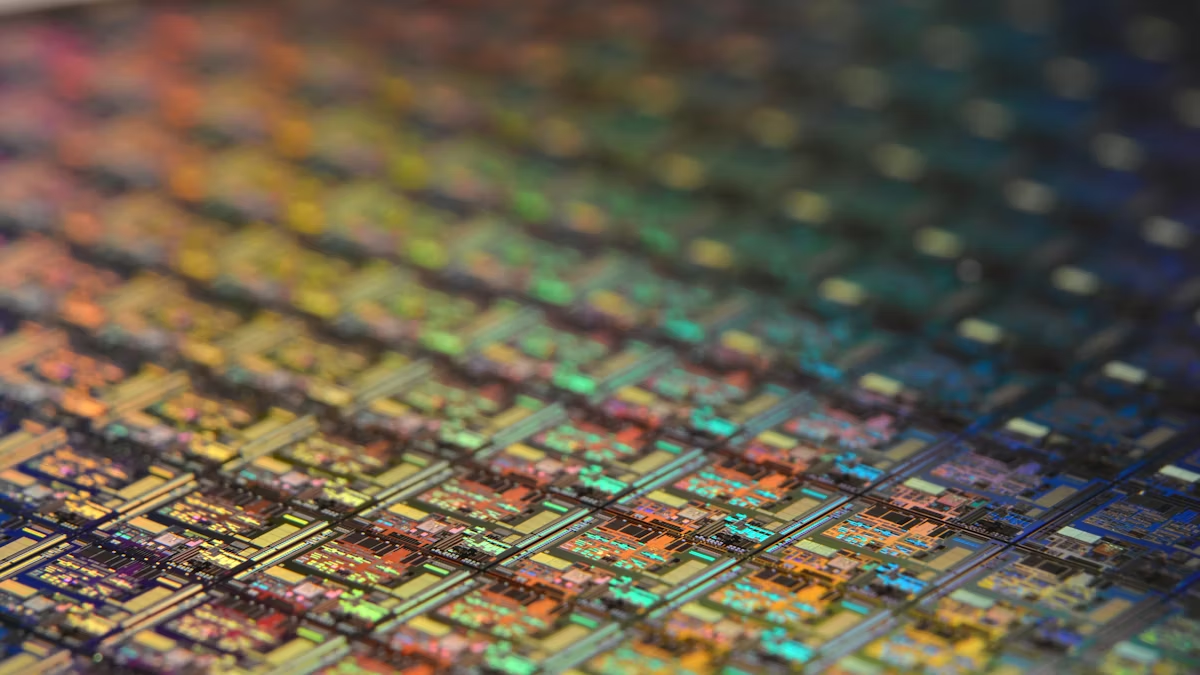Wafer-Scale Integration: Pushing the Boundaries of Chip Design

Wafer-scale integration, a daring advancement in chip design that defies accepted production norms, is in the vanguard of semiconductor innovation. This technique has the potential to completely change computer capabilities by turning whole silicon wafers into a single, enormous integrated circuit. Wafer-scale integrated chip design appears as a novel strategy that has the potential to completely transform the future of electronic devices as the need for more potent and effective computing solutions keeps increasing. This thorough investigation offers insights into one of the most ambitious advancements in semiconductor technology by examining eight important facets of wafer-scale integration, from its foundational ideas to its possible influence on future computing environments.
1. Understanding the Basics of Wafer-Scale Integration
Wafer-scale integration, which turns whole wafers into individual, functional integrated circuits, is a revolutionary method in semiconductor manufacturing. This process keeps the entire silicon wafer intact as a single, enormous chip, in contrast to conventional chip production, which cuts wafers into separate chips. Imagine putting a whole city on one piece of land rather than putting individual structures in different places. The constant desire to increase processing power while lowering energy use and physical space constraints gave rise to this ground-breaking idea. Through the use of sophisticated engineering processes, manufacturers are able to efficiently utilize every millimeter of silicon accessible by creating complicated circuits throughout the whole wafer surface. Even while this method has many technical obstacles, it also offers previously unheard-of opportunities to build strong computer systems that can more effectively manage jobs that are more complicated.
2. The Evolution and Historical Context
Wafer-scale vlsi circuit journey started in the early days of semiconductor production, but for many years it was mainly theoretical because of technical constraints. Numerous obstacles, including yield and interconnect concerns, hindered early attempts in the 1970s and 1980s, making large-scale production impracticable. Nonetheless, the foundation for contemporary implementations was established by these early efforts. Many technological obstacles, ranging from handling temperature management to resolving intricate connectivity issues, were progressively overcome by the tenacious efforts of engineers and researchers over several decades. This progression demonstrates how perseverance and technical innovation may turn apparently insurmountable ideas into reality, and also reflects the larger growth of semiconductor technology. Wafer-scale integration’s history exemplifies the semiconductor industry’s unwavering drive for innovation and capacity to overcome accepted constraints.
3. Technical Challenges and Solutions in Implementation
Engineers face a number of difficult technological obstacles while developing functioning wafer-scale integrated circuits. One of the most important problems is heat dissipation since bigger circuits produce more heat, which needs to be effectively controlled to avoid damage and performance deterioration. Another major issue is defect control, as even little flaws can compromise the operation of the entire wafer. To overcome these obstacles, engineers have created creative solutions such as complex cooling systems and redundant circuit designs. New materials and architectural techniques enhance heat dispersion across the wafer, while sophisticated testing techniques aid in the early detection and isolation of flaws in the production process. When taken as a whole, these solutions mark important breakthroughs in semiconductor manufacturing technology, and they keep changing as new problems arise.
4. Manufacturing Processes and Technologies
Wafer-scale integrated circuit production demands incredibly regulated and accurate procedures that challenge the state of semiconductor fabrication today. First, silicon wafers are carefully chosen and prepared. Next, many layers of circuit patterning are applied using sophisticated photolithography processes. For the whole wafer surface to be homogeneous, every step needs to be carried out with previously unheard-of accuracy. Compared to conventional chip production, every manufacturing flaw can impact a far greater percentage of the finished product, making quality control more important. To produce these enormous integrated circuits, the process combines a number of cutting-edge technologies, including precision etching methods and sophisticated materials deposition. To guarantee constant quality throughout the production process, manufacturers need to use advanced automation technologies and keep their surroundings incredibly clean.
5. Applications and Real-World Impact
Applications for wafer-scale integration are particularly promising when high-speed data processing and enormous computing power are needed. These systems are especially useful for complicated simulations, scientific research, and teaching artificial intelligence. Compared to conventional multi-chip systems, the technology allows for quicker processing rates and lower power consumption, which makes it perfect for high-performance computing settings and data centers. Advanced financial modeling systems, drug discovery research, and climate modeling are examples of real-world uses. Beyond only computer capacity, these systems can aid in the more effective solution of complicated issues, which could result in innovations across a range of industries. The technology’s capacity to swiftly and effectively handle enormous volumes of data creates new avenues for resolving issues that were previously unsolvable.
6. Economic Considerations and Market Dynamics
A delicate balance between production costs and possible advantages is presented by the economics of wafer-scale integration. Through greater integration and decreased system complexity, the technology offers potential long-term cost savings, even if the initial investment in manufacturing facilities and equipment is still significant. Market dynamics, which include elements like the need for high-performance computing and rivalry from other technologies, have a significant impact on adoption rates. Production yields and the capacity to maintain uniform quality over huge wafers are critical to the economic feasibility. For some high-value applications where conventional methods are limited, wafer-scale integration is an appealing alternative due to the possible advantages in terms of performance enhancements and energy efficiency, despite the high starting costs.
Conclusion
Wafer-scale embedded system design offers previously unheard-of potential for computing power and efficiency, marking a substantial advancement in semiconductor technology. Even if there are still technological difficulties, new developments keep increasing the technology’s possible uses and advantages. This technology’s future hinges on its ability to effectively strike a balance between its technological prowess, financial concerns, and environmental obligations. As the technology advances, it should make it possible to solve intricate computational problems in novel ways and maybe provide high-performance computing methods that are more environmentally friendly. Wafer-scale integration is a prime example of how pushing the frontiers of technology may result in revolutionary improvements in computing power.






